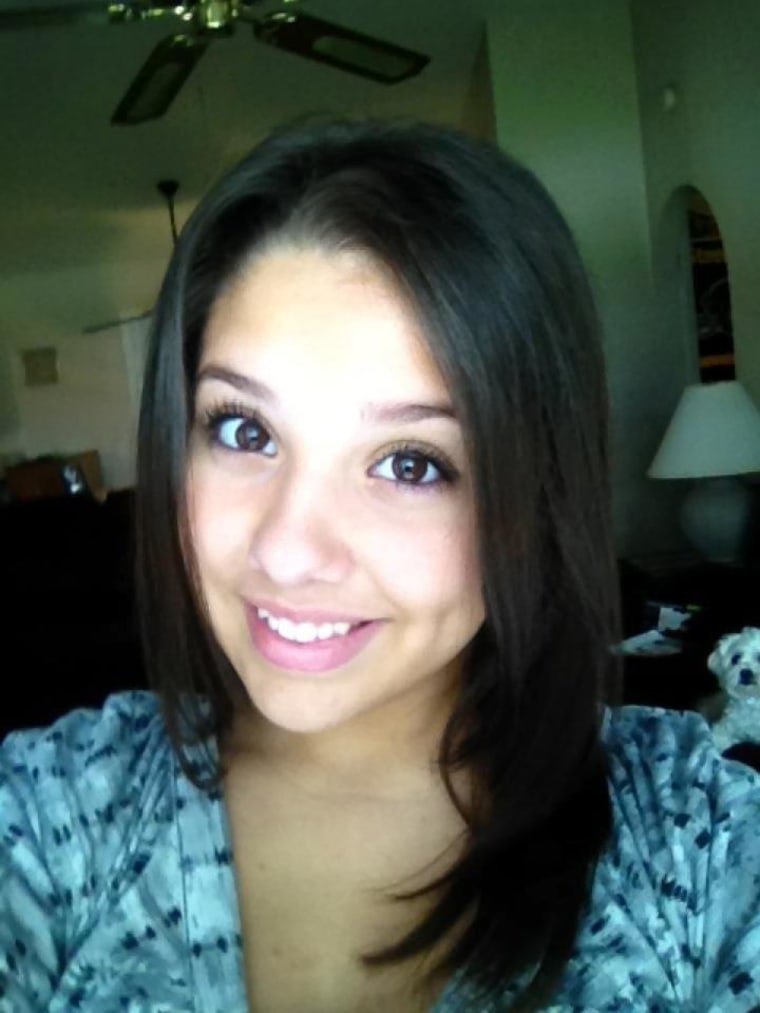Samantha Pecoraro may never eat what most of us would consider a "real meal" again.
The 15-year-old from Cape Coral, Fla., has a condition called eosinophilic esophagitis, a sort of extreme form of food allergy. For Sam, as she likes to be called, it means that most foods -- gluten, dairy, wheat, you name it -- make her very, very sick.
"I honestly don't remember a time I felt OK after eating," Sam says. She pauses and adds, "Oh, that's sad!"
Eosinophilic esophagitis is not common, occurring in only 1 in 10,000 people -- but the rate of diagnosis appears to be on the rise, says Dr. Diane Kocovsky, a pediatric gastroenterologist at Boys Town National Research Hospital in Omaha, Neb. (Kocovsky hasn't treated Sam.) She believes the uptick she's seeing is likely due at least in part to increased awareness of the condition, which was called a a "newly recognized disease," according to a 2008 report in the journal Gastrointestinal Endoscopy Clinics of North America.
"I explain it to my patients as an inflammatory condition of the esophagus that results in too many white blood cells -- eosinophils -- lining the esophagus," explains Kocovsky, who is the president elect of the Association of Pediatric Gastroenterology and Nutrition Nurses. "This causes the esophagus to be rough. I tell them that the esophagus should be smooth, like the inside of your cheeks ... This rough or inflamed lining can cause pain, difficulty swallowing or vomiting, to name a few symptoms. I often make the analogy of it being like eczema of the esophagus as most people know what eczema is."
Before being diagnosed with eosinophilic esophagitis, Sam's seemingly constant upset stomach was a heartbreaking mystery to her mother, Susan [McArthur.] Doctors believed Sam's frequent vomiting was psychological, caused by anxiety, than something physical.
"It was very upsetting that nobody believed me and nobody wanted to help me. As a little kid, it was frustrating to be told you’re making it up," Sam remembers.
As an elementary school kid, she would get sick during the day, and would want to call her mom to take her home. "There are many times, I don’t think other people noticed, but I would be there and I would all of a sudden have to run to the bathroom," she remembers. "There were many times when my mom had to bring me a change of clothes. It was very embarrassing. I mean, I’m a girl -- I don’t want to be looked at like that."
But after doctors couldn't find anything physically wrong with the girl, Sam's mom was persuaded to try "tough love" -- she would no longer pick Sam up during the day when she felt sick. (That was years ago, but Sam says her mom still frequently apologizes for it.)
When Sam was 10, the diagnosis finally came: Sam had eosinophilic esophagitis. Soon afterward, Sam had surgery to insert a low-profile gastric feeding tube, or "g-tube," into her body -- that's now where she gets most of her nutrition. She doesn't eat any "real food," save for a plain white potato, which her body seems to be able to handle.
"When she first got the surgery I didn’t eat at all in front of her," McArthur remembers. "I lost 15 pounds. I would go to the bathroom and choke down a sandwich."
Sam remembers that, too. "She wouldn’t eat, and it was heartbreaking -- here my mom is, withering away to nothing. I felt guilty. I would be like, 'Mom, you need to eat,'" she says. "When I first got the tube she would lie to me -- she would be eating something and I would say, 'How is it?' and she would say, 'Oh, it’s not that good.' I would be like, 'Mom, I’ve had pizza before -- I know it’s delicious!"
Now, Sam includes herself in meal times by cooking for her friends and family. She wants to go to culinary school later, and she's starting now -- she starts her day at 7 a.m. culinary class many days of the week.
"It makes me feel like I’m a part of meal times," she says. Her most recent meals: bourbon chicken. Braciola. Flank steak. Escargot. Creme brulee. "I call myself the Blind Chef, because I can’t eat it, so I use my other senses." She focuses on presentation, taking photos for her culinary portfolio. And she loves to take in the smells of food. There are times, she admits, that she's been caught all by herself in the kitchen, taking a deep whiff of salad dressing, or cinnamon.
She misses eating real food -- especially pastas and salad, and kid stuff like pizza, mac 'n' cheese or chicken tenders. But she says she's rarely tempted to steal a bite.
"It’s not fair to my insides, to me. I’ve come so far to throw it away on a piece of candy," Sam says. "I’m happy feeling good; I wasn’t able to say that a while ago."
